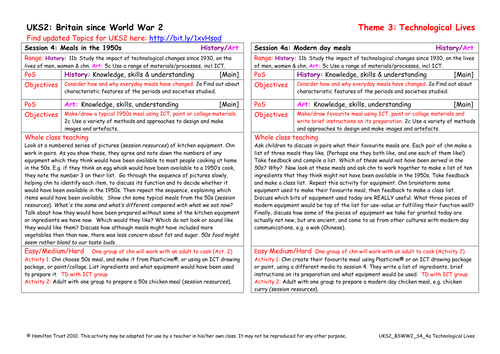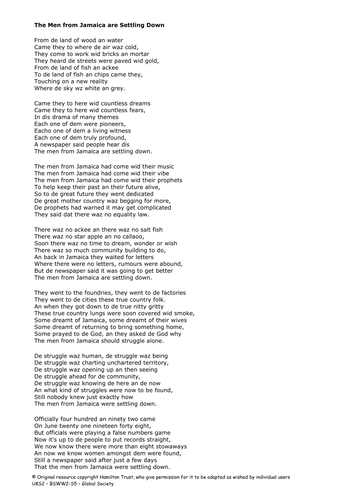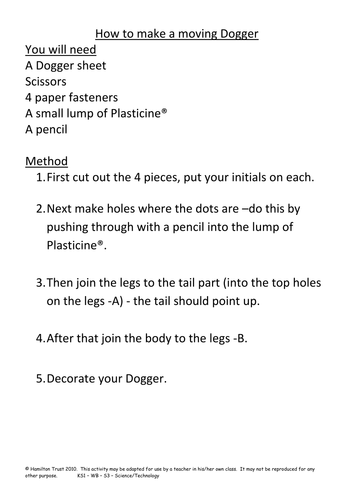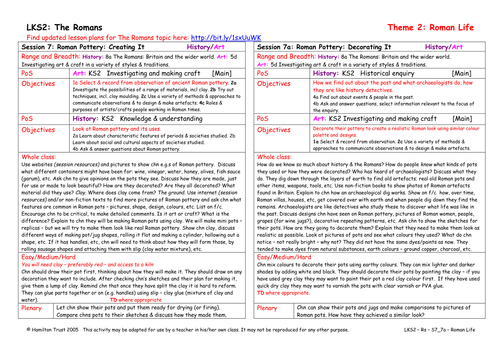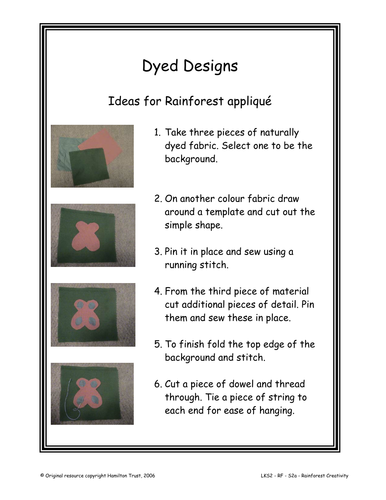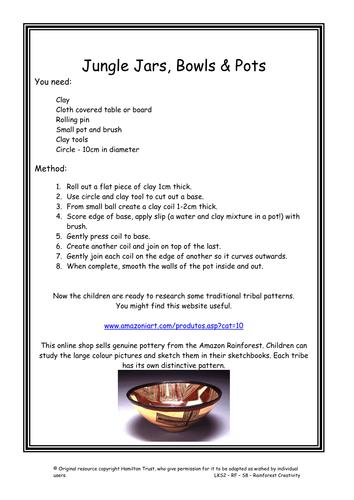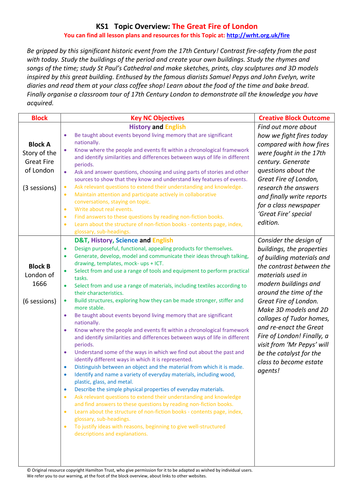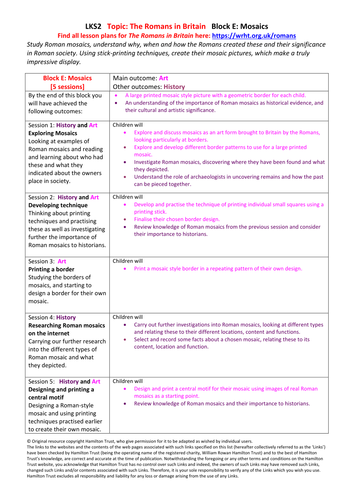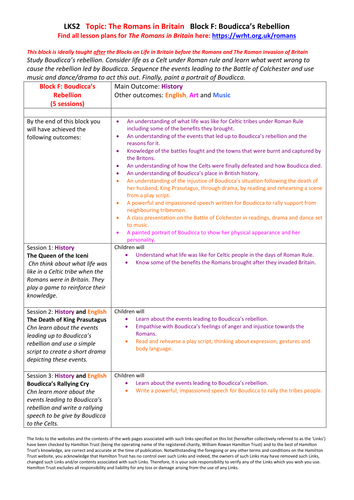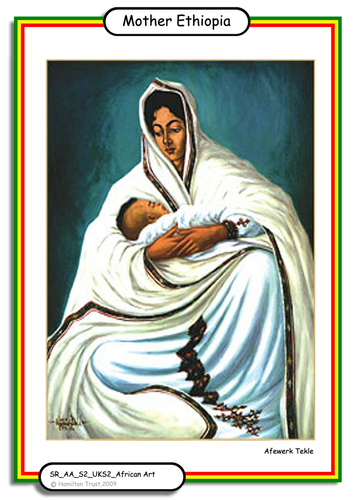
3k+Uploads
10009k+Views
11617k+Downloads
Art and design

Meals In The 1950's
Children look at pieces of kitchen equipment and guess which were available in the 1950s. One group make a real chicken meal, whilst the others make a typical 50s dinner from Plasticine, an ICT package or paint/collage materials. All taste the 50s dinner.

Notting Hill Carnival
Read Benjamin Zephaniah’s poem The Men from Jamaica are Settling Down. Discuss the treatment that migrants from the Caribbean received from some British people. Explain how this lead to riots and the first Notting Hill Carnival. Children design carnival costume.

Plants - Ready, Steady, Grow - Year 2
Explore the world of seeds in this unit: learn why plants disperse their seeds and the various clever ways in which they do this. Plant cress seeds and grow a bean using hydroponics – watch and record what happens to them. Using various art and design techniques, make and model your own seeds and finally enjoy the fruits of your labours!
Includes 6 session plans & resources:
01 - Spreading seeds part 1
02 - Spreading seeds part 2
03 - Hydroponics in the classroom
04 - Growing cress
05 - How has the bean grown?
06 - Eating cress
Hamilton’s science scheme provides children with a broad but comprehensive experience of primary science that systematically covers all of the National Curriculum for England objectives. Each year group is split into 6 blocks of 6 sessions, each of which can be completed within a half-term. We present them in a recommended teaching order, but you may adapt this to fit your requirements. Working scientifically, investigations and meaningful outcomes are fully incorporated in each block.
Find out more: www.hamilton-trust.org.uk/scites

Make a Moving Dogger
Practise cutting and joining skills by making a moving Dogger. This session links to English Plan 2 Stories with familiar settings. Learn how to cut well, make a hole in cardboard and construct moving joins using paper fasteners.

Observational drawing of a favourite toy
Children learn the word ‘texture’. They look carefully at their favourite toy and talk about the feel and appearance. They decide which media they want to use to represent it and do a beautiful drawing! They talk about their work and the work of other people.
Suitable for years 1 and 2.

Ethiopian Inspiration
Think big and create a class mural based on the work of Afewerk Tekle.
Children work collaboratively to plan and paint a mural with a biblical subject in the same style as Tekle.

Self-Portraits: Picasso-style
Children look at portraits by Pablo Picasso. They talk about how he plays with faces and makes them into a puzzle. They use work from session 2 to make their own self portraits in the style of Picasso.
Suitable for years 1 and 2.
Find other lesson plans and resources at www.hamilton-trust.org.uk.

Self- Portraits
Children look at and talk about proportions of faces for drawing self portraits. They then draw two self portraits using oil pastels and discuss a Picasso portrait.
Suitable for years 1 and 2.
Find other lesson plans and resources at www.hamilton-trust.org.uk.

Roman Pottery - Decorating It
Following Session 7, children look at their pots and consider the appropriate decorations to make these look really Roman. Having done more research, they decorate their pots and then varnish them. They compare their pots to the pictures of Roman pots.
Suitable for years 3 and 4.
Find other lesson plans and resources at www.hamilton-trust.org.uk.

Feeling Welcome
New arrivals in Britain should be made to feel welcome. Think about children moving to a new school from another part of Britain or from another country. Children create posters or write leaflets to welcome newcomers to their school.

Design a Page
Look in detail at the variety of illustrations in We Are All Born Free and discuss production of a class book of Children’s Rights. Each child designs a page about a particular Right and the Responsibility that links to it. In groups evaluate the planning.
Suitable for years 5 and 6.
Find other lesson plans and resources at www.hamilton-trust.org.uk.

Australian Rainforest Animals
Children think about the animals that they know come from Australia and then find out if they live in any of its rainforest regions. Children then look at a list of Australian rainforest animals, and print an image from the computer.

3D Bugs - Insects and Spiders
Creepy crawlies, mini beasts or insects… Children find out that they all have six legs. Children use information texts to identify them and create a list before making their own 3D bug using thick card.
Suitable for years 3 and 4.
Find other lesson plans and resources at www.hamilton-trust.org.uk.

Appliqué – Cutting & Sewing
In this session children complete their Appliqué by cutting and sewing the pieces of their design before proudly displaying it in the classroom. They take time to reflect on the whole dyeing and designing process and evaluate the finished product.

Jungle Jars, Bowls and Pots
In this session children take a look at typical examples of pots created by peoples of the Rainforests. They study the differences in pattern and decoration before creating their own pot from clay and decorating it.

The Great Fire of London - St Paul's Cathedral - Key Stage 1
Be gripped by this significant historic event from the 17th Century!
Develop your ideas about this famous cathedral using drawing, imagination and communication; use charcoal drawing and potato printing to develop artistic ideas inspired by St Paul’s before designing, making and decorating a final model Cathedral.
Includes:
- Topic Overview
- Block Overview
- Lesson 01: Journey Back in Time
Find out about St Paul’s Cathedral and then develop your own ideas in charcoal pictures.
- Lesson 02: The Dome
Research St Paul’s further using paintings and sculptures and use clay to make your own 3D artefacts.
- Lesson 03: Abstract Art
Think about the way fire looks and the way it makes people feel. Empathise with the people who lived through the Great Fire and make your own piece of abstract art using potato printing.
- Lesson 04: Designing and making a cathedral
Consolidate all your knowledge about St Paul’s cathedral by planning, making and decorating your own junk model cathedral.
Find more lesson plans and resources at www. hamilton-trust.org.uk.

Publish our Book
Discuss key words, rights and responsibilities used in children’s designs. Look at the different art techniques used in We Are All Born Free. Children are given time to create their page for the class book using their chosen technique. Make the book and front cover.
Suitable for years 5 and 6.
Find other lesson plans and resources at www.hamilton-trust.org.uk.

Roman mosaics
Children study Roman mosaics, understanding why, when and how the Romans created these and their significance in Roman society. Using stick-printing techniques, children create their own mosaic pictures, which make a truly impressive display.
Includes:
- Topic Overview
- Block Overview
- Lesson 01: Exploring mosaics
Looking at examples of Roman mosaics and reading and learning about who had these and what they indicated about the owners place in society.
- Lesson 02: Developing technique
Thinking about printing techniques and practising these as well as investigating further the importance of Roman mosaics to historians.
- Lesson 03: Printing a border
Studying the borders of mosaics, and starting to design a border for their own mosaic.
- Lesson 04: Researching Roman mosaics
Carrying our further research into the different types of Roman mosaic and what they depicted.
- Lesson 05: Printing a central motif
Designing a Roman-style mosaic and using printing techniques practised earlier to create their own mosaic.
Hamilton’s cross-curricular topics provide extensive planning resources to facilitate teaching a range of subjects under specific historical, geographic or thematic umbrellas.

Boudicca's rebellion
Children study Boudicca’s rebellion.
They consider life as a Celt under Roman rule and learn what went wrong to cause the rebellion led by Boudicca. They sequence the events leading to the Battle of Colchester and use music and dance/drama to act this out. Finally they paint a portrait of Boudicca.
Includes:
- Topic Overview
- Block Overview
- Lesson 01: The Queen of the Iceni
Children think about what life was like in a Celtic tribe when the Romans were in Britain. They play a game to reinforce their knowledge.
- Lesson 02: The death of King Prasutagus
Children learn about the events leading up to Boudicca’s rebellion and use a simple script to create a short drama depicting these events.
- Lesson 03: Boudicca’s rallying cry
Children learn more about the events leading to Boudicca’s rebellion and write a rallying speech to be give by Boudicca to the Celts.
- Lesson 04: The Battle of Colchester
Children learn about the battles fought between Boudicca and the Romans. Using soundtrack of Mornay’s dream, they perform a dance/drama of the Battle of Colchester.
- Lesson 05: The story ends and the legend begins
Children learn how Boudicaa’s rebellion ended and create a portrait of Boudicca showing her character as a warrior and a proud leader of her tribe’s people.
This block is part of our Key Stage 2 Cross-Curricular Topic The Romans in Britain.

Afewerk Tekle
It’s time to come up to date and look at work of a modern Ethiopian painter: Afewerk Tekle.
Children use websites to find out how his work has been influenced by the tradition of icon painting.

